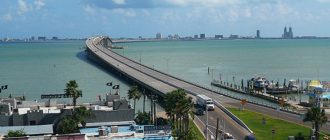The Cherokee Indian reservation in Western North Carolina holds a population that descended from Cherokee who risked their lives by refusing the government’s forced relocation in 1838. They keep many Cherokee traditions alive, including the languag
Today, when most people learn about the Cherokee Indian Reservation they are learning about the Cherokee Reservation in North Carolina. It is populated by descendants of the Cherokee that refused to participate in the 1838 Trail of Tears, the forced migration that left 4,000 Cherokee dead.
Today there are three federally recognized bands of Cherokee Indians. The Cherokee Nation of Tahlequah, Oklahoma has a population of 220,000, while the United Keetoowah Band of Cherokee (also of Tahlequah) number around 10,000. The Eastern Band of Cherokee Indians (EBCI), who are not politically affiliated with the other two bands live in Cherokee, North Carolina. There are around 10,000 in the EBCI.
The Eastern Band survived due to the actions of Chief Yonaguska and the Caucasian son he adopted named William Holland Thomas. Thomas lobbied at the state and federal level for the Cherokees’ right to remain in North Carolina, and he purchased land for what is now the Qualla Boundary, the official name of the reservation.
Within the Qualla Boundary the EBCI has established Cherokee Language immersion programs and now require all graduating high school seniors to speak Cherokee. Of a population of around 10,000, about 10% of them speak Cherokee, but this number is expected to gradually increase with the education programs. Almost three-quarters of Cherokee speakers are over the age of 50.
The Boundary contains over 20 Christian churches of different denominations. Over the centuries, some of the traditional religious practices of the Eastern Band have merged with new age concepts and customs, and have changed with the relative isolation of the various branches of Cherokee society. But there are traditional ceremonies that are practiced by the EBCI still.
The EBCI make up the largest organized Indian reservation east of the state of Wisconsin. There remain Eastern Cherokee who compete in blowgun and archery contests, play Indian games like Indian Ball, and practice other games that existed for centuries before Europeans came into their homeland. Cherokee spear points predate the “modern” bow and arrow by several centuries, and there have been pottery artifacts discovered that are dated back 10,000 years. The Occonaluftee Indian Village on the Qualla Boundary is a carefully recreated village with woven cane and clay structures that the earliest Cherokee lived in. The village also contains the dirt-floor cabins that were adopted from the culture of the white traders that settled nearby.
In the western foothills of North Carolina, the Cherokee Indian Reservation is located on Highways 19 and 441. The Qualla Boundary lies mostly in Swain and Jackson Counties, but there are non-contiguous lands in Cherokee County, Graham County, and Haywood County.





